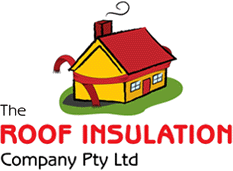| |
|||||||||||||||||||||||||||||||||||||||||||||||||||||||||||||||||||||||||||||||||||||||||||||||||||||||||||||||||||||||||||||||||||||||||||||||||
 |
|||||||||||||||||||||||||||||||||||||||||||||||||||||||||||||||||||||||||||||||||||||||||||||||||||||||||||||||||||||||||||||||||||||||||||||||||
 |
|||||||||||||||||||||||||||||||||||||||||||||||||||||||||||||||||||||||||||||||||||||||||||||||||||||||||||||||||||||||||||||||||||||||||||||||||
|
Insulation products come in two main categories – bulk and reflective. Composite bulk and reflective materials are available that combine some features of both types. Examples include reflective foil faced blankets, foil backed batts and foil faced boards. |
||||||||||||||||||||||||||||||||||||||||||||||||||||||||||||||||||||||||||||||||||||||||||||||||||||||||||||||||||||||||||||||||||||||||||||||||
|
|
Bulk Insulation traps air in still layers.Bulk insulation mainly resists the transfer of conducted and convected heat, relying on pockets of trapped air within its structure. Its thermal resistance is essentially the same regardless of the direction of heat flow through it. Bulk insulation includes materials such as glasswool, wool, cellulose fibre, polyester and polystyrene. All products come with one Material R-value for a given thickness. Reflective insulation mainly resists radiant heat flow due to its high reflectivity and low emissivity (ability to re-radiate heat). It relies on the presence of an air layer of at least 25mm next to the shiny surface. The thermal resistance of reflective insulation varies with the direction of heat flow through it. |
Reflective insulation is usually shiny aluminium foil laminated onto paper or plastic and is available as sheets (sarking), concertina-type batts and multi-cell batts. Together these products are known as reflective foil laminates or RFL. Dust settling on the reflective surface will greatly reduce performance. Face reflective surfaces downwards or keep them vertical. The antiglare surface of single sided foil sarking should always face up. The Total R-values for reflective insulation are supplied as up and down values. Total values depend on where and how the reflective insulation is installed. Ensure system values provided by the manufacturer relate to your particular installation situation. |
|||||||||||||||||||||||||||||||||||||||||||||||||||||||||||||||||||||||||||||||||||||||||||||||||||||||||||||||||||||||||||||||||||||||||||||||
|
|
Common types of reflective insulation
Common types of bulk insulation
*Consult manufacturers for maximum roof slope to which loose fill insulation can be installed Composite insulation combines the benefits of bulk and reflective insulation
|
||||||||||||||||||||||||||||||||||||||||||||||||||||||||||||||||||||||||||||||||||||||||||||||||||||||||||||||||||||||||||||||||||||||||||||||||
| TRI-CO Energy Group Pty Ltd Unit 2 / 11 Egham Road Burswood 6100 Western Australia |
SITE
MAP | CONTACT | ABOUT
| OPENING HOURS | PRIVACY
POLICY |
||||||||||||||||||||||||||||||||||||||||||||||||||||||||||||||||||||||||||||||||||||||||||||||||||||||||||||||||||||||||||||||||||||||||||||||||
| The Roof Insulation
Company is registered installer on the Australian Government Register
under Energy Efficient Homes Package 2010 Copyright © The Roof Insulation Company - Perth. All rights reserved. ABN 50 139 393 338. Site design by westaust.net |
|||||||||||||||||||||||||||||||||||||||||||||||||||||||||||||||||||||||||||||||||||||||||||||||||||||||||||||||||||||||||||||||||||||||||||||||||


